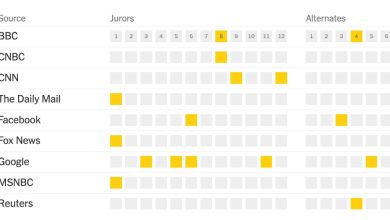A Show of Might in the Skies Over Israel

Iran’s much-anticipated retaliation for Israel’s killing of senior military leaders produced a fiery aerial display in the skies over Israel and the West Bank.
But in important ways, military analysts say, it was just that: a highly choreographed spectacle.
The more than 300 drones and missiles that hurtled through Iraqi and Jordanian airspace Saturday night before they were brought down seemed designed to create maximum drama while inflicting minimal damage, defense officials and military experts say. Just as they did back in 2020 when retaliating for the U.S. killing of Gen. Qassim Suleimani, Iranian leaders this weekend gave plenty of warning that they were launching strikes.
Iran also sequenced the attack, a retaliation for airstrikes on an Iranian Embassy building in Syria on April 1, in such a way that both Israelis and Americans were able to adjust their aerial defenses once the Iranian missiles and drones were in the air.
The result: a lot of bang, but relatively little destruction on the ground.
Few of Iran’s drones and missiles found their intended targets, an inaccuracy level that military experts and defense officials say was probably by design.
Iran planned the attacks in a way that would send a warning to Israel and create deterrence but avoid sparking a war, according to two members of the Islamic Revolutionary Guards Corps who spoke on the condition of anonymity because they were not authorized to speak publicly. Iran’s foreign minister, Hossein Amir Abdollahian, said Iran gave countries in the region about 72 hours advance warning.
“I think Iran is very concerned about what comes next if they were too effective,” said Gen. Joseph L. Votel, a former leader of the U.S. military’s Central Command. “The early notification of what they were doing seems a little interesting to me.”




